- Call us: 01444 237070
- Contact Us
- Stores
- Sign In / Register
-
- Back
- Used Cameras
- Used Lenses
- Used Video
- Used Film Equipment
- Used Stock Alert
- Used Accessories
- Recently Added Used Equipment
- Used Clearance
- Faulty
- Park Picks
- Sell or Part Exchange
- Trade-In
- Blog
- New in
- Call us
- Contact us
- Stores
- Sign in
- Categories
- Tips & Inspiration
- Reviews
- News
- Events
- Features
- Buying Guides
- Competitions
The Benefits of Using an All-In-One Zoom Lens
Zoom lenses have always been a staple of any photographer’s camera bag. Being able to control focal length is something we usually take for granted, as it provides unmatched versatility and adaptability. Many photographers want to maximise the control that a zoom lens brings, so they search for ‘one lens to rule them all’ – having a lens that can sit on the front of your camera and capture almost anything you want to shoot is an inviting notion. This is the demand that an all-in-one lens aims to meet.
Not only are these lenses often smaller, lighter and cheaper, but they offer a level of versatility unmatched by other zoom lenses. Going straight from wide-angle to far-reaching telephoto focal lengths in a single lens means photographers hardly have to think about changing lenses.
These lenses can be found anywhere – from big brands like Canon, Sony and Nikon, to strong alternatives like Fujifilm X and Micro Four-Thirds, to third-party offerings. Read on as we explore the benefits of using an all-in-one zoom lens, the best options for your camera and how you can use them for maximum impact.
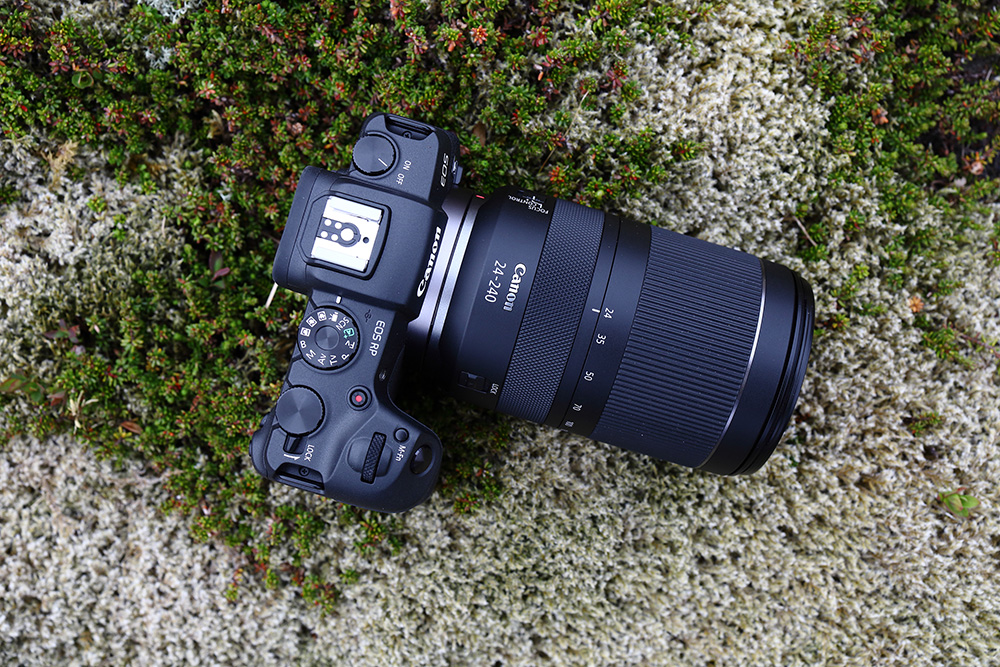
Canon EOS RP with Canon RF 24-240mm
What is an all-in-one zoom lens?
Simply put, an all-in-one lens covers both wide and medium to high focal lengths. While the majority of standard zooms start at a wide angle and reach short telephoto lengths like 70mm, an all-in-one zoom goes far beyond this. Expect to see lenses ranging from around 24mm to far-reaching lengths in the hundreds. A common range for an all-in-one lens is 24-240mm – this provides photographers with a healthy 10x zoom range that creates so many possibilities with just a single option.
One of the biggest selling points for an all-in-one zoom lens is portability. They’re significantly smaller and lighter than standard zooms with wider, constant apertures. Furthermore, using only one optic to cover all of the focal lengths you want to shoot is a huge space-saver. Bringing a single light, versatile lens to a shoot is often preferable to bringing multiple and having to switch them in the middle of what you’re doing.
Not having to change lenses makes for much smoother photography. If you can direct all of your focus towards shooting, and worry less about switching focal widths or carrying them around, your experience will feel exponentially more enjoyable.
A criticism that often befalls lenses like these is that not only are they as sharp as standard zooms or primes, that their max apertures are higher and often variable too. The truth is that the sacrifice of sharpness is barely noticeable unless pixel peeping – all modern lenses enable you to take a brilliant photo, and at the end of the day, it doesn’t matter too much when the versatility of an all-in-one lens enables you to compose so freely and easily.
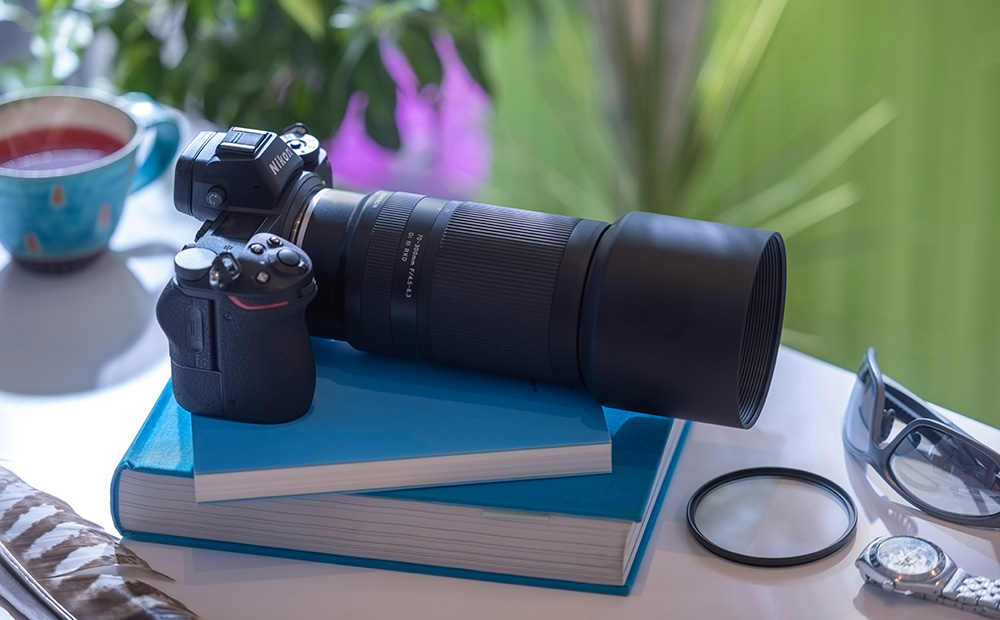
Nikon Z6 with Tamron 70-300mm
Who needs an all-in-one zoom lens?
Different genres of photography call for different lenses. To reap the benefits of an all-in-one zoom lens, it should perfectly cater to your style of photography. Luckily, they’re incredibly versatile, and in a lot of cases, they’re a must-have in your camera bag. Even if it doesn’t suit your main focus, adding one to your arsenal will enable you to explore new avenues and will simply give you something that requires little thought to shoot with, incorporating freedom into your photography experience.
The ease of use of an all-in-one zoom makes them incredibly popular among enthusiasts and hobbyists. If you struggle to justify cashing out on multiple lenses, they’re a viable option to cover lots of bases and produce photos that you’re happy with regardless of subject. Getting into photography using an all-in-one zoom lens is an effective strategy, as the types of shots you can explore are much greater than with a smaller range, or even a prime lens.
Travel photographers are a huge demographic for all-in-one zoom lenses. In busy locations where both time and space are of the essence, changing lenses can be a nightmare. The easiest solution to this is simply not having to! With a huge focal length range, there’s hardly any subject that you won’t be able to shoot. They’re often lighter than other zoom lenses too, which makes them the perfect tool for a portable setup.
Videographers can also benefit greatly from them. The low weight is a key factor, as well as the liberty to compose on the fly. For a videographer, a shallow depth of field isn’t always vital, so the freedom that an all-in-one lens brings is perfect compensation for losing a couple of f-stops.
If an all-in-one lens seems like it would suit your needs, then keep reading as we explain all the best choices for you and your system.
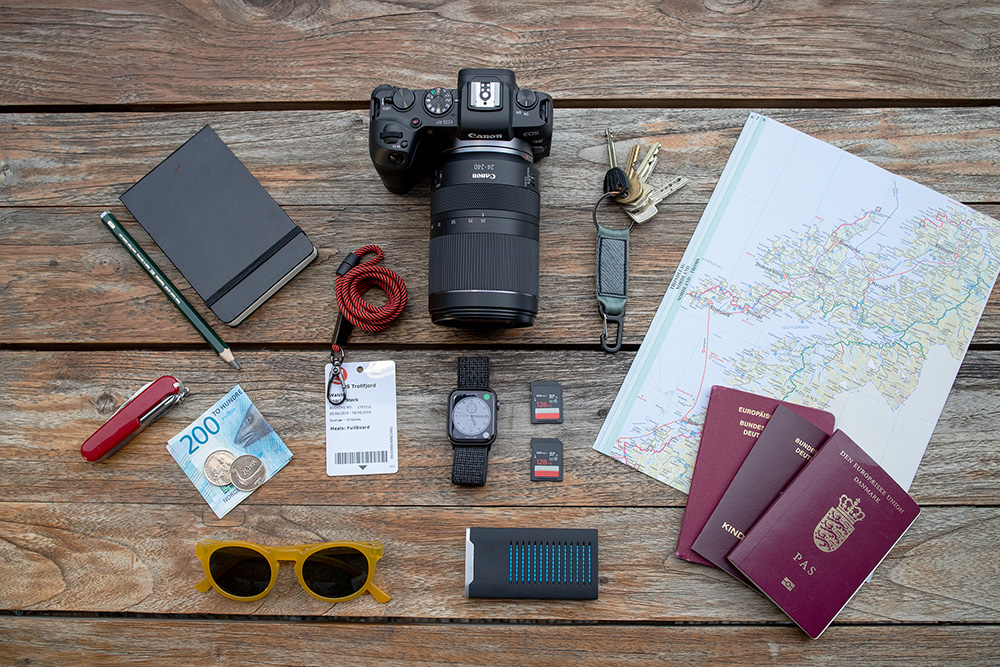
Image from Richard Walch
Canon all-in-one lenses
The Canon RF-Mount has seen a healthy range of products released with the introduction of the EOS R series of cameras in 2018. The only full-frame Canon all-in-one lens available so far is the Canon RF 24-240 f/4-6.3 IS USM, which covers an impressive range with some powerful specs. Weighing just 750g, this lens will put no strain on you or your camera bag.
The built-in Optical Image Stabiliser in this model compensates for up to five stops of camera shake – Dynamic IS also compensates for footage shot whilst moving, which benefits videographers, a large demographic for all-in-one lenses. For even more ease of use, this features Canon’s custom control ring to adjust a variety of settings. APS-C users will look to the RF-S 18-150mm F/3.5-6.3, which has an impressive weight of 310g.

Sony all-in-one lenses
Sony’s range of cameras is a lineup full of diversity. Not only does it sell some of the most powerful cameras on the market like the A9 III and the A1, constantly taking the boundaries of specs further, but it also specialises in making photography a smoother experience for the average user.
Take their smaller offerings, for example. The A6700, the A7C II, or even the 60MP A7CR are all united by one thing – they’re compact. Each of these cameras are practically asking to be used with an all-in-one lens. Users of these cameras are most likely to have portability and ease of use at the front of their minds; something that all-in-ones are masters in.
For full-frame Sony users, the go-to all-in-one lens is the FE 24-240mm F/3.5-6.3 OSS. The 10x zoom range covers everything you’d want to shoot on your Sony camera and weighs in at a comfortable 780g. Optical SteadyShot image stabilisation and weather-sealing make this perfect for shooting on the go.
Users of the A6x00 series of APS-C cameras will look to the Sony 18-135mm f/3.5-5.6 OSS, which features a 27-202.5mm equivalent focal range. If the range of your lens is the most important feature, Tamron offers the 18-300mm f/3.5-6.3 for the E-Mount, with an eye-watering equivalent 35mm range of 27-450mm.
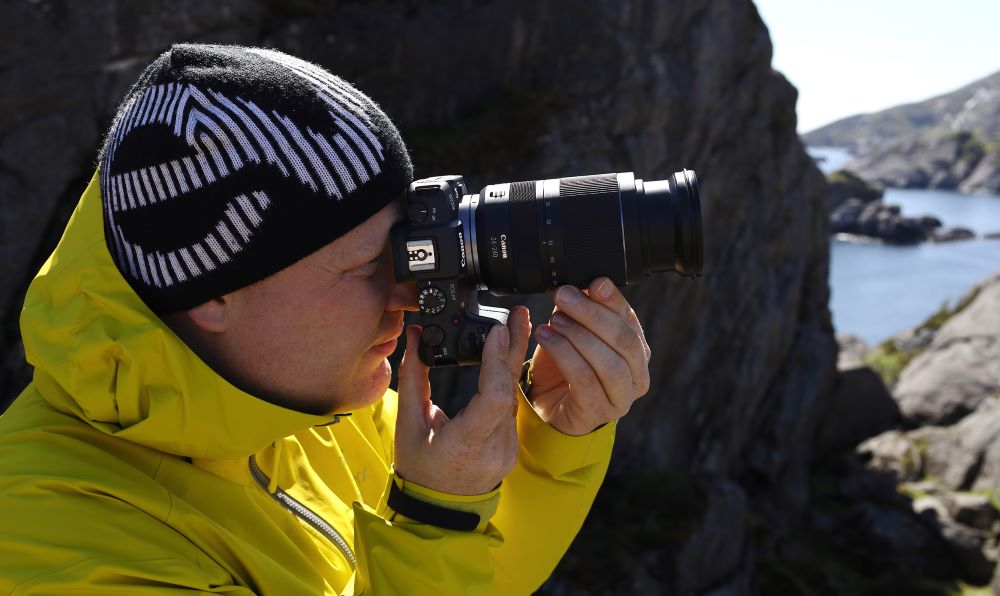
Image from Richard Walch - Canon RF 24-240mm
Nikon all-in-one
The Nikon Z Mount has offered high-end optical performance since its inception. Being the largest full-frame mount on the market, the Nikkor-branded lenses for the system are renowned for their quality, and their all-in-one lenses are no exception.
The award for the most compact, lightweight Z-Mount zoom goes to the Nikon Z 24-200mm F/4-6.3 VR. Its portability is the most impressive among its full-frame all-in-one competitors at just 570g, with 5 stops of vibration reduction included.
This lens impresses with its optical quality – Nikon claims the design to be ‘optically superior’, delivering deep contrast and vibrant colours. It also features a minimum focus distance of 0.5m for close-up shooting. Its weight means it works as well for video as it does for stills, with a silent STM motor as well as focus breathing reduction.
The Nikon Z DX 18-140mm f/3.5-6.3 VR lens offers a 27-210mm equivalent range for cropped-sensor shooters at only 315g. With such a remarkable weight, this would find itself right at home on the front of the retro Nikon Z Fc, or the light and agile Nikon Z 50 – both perfect for travel.
With the most ambitious zoom range in a mirrorless lens today, the Nikon 28-400mm f/4-8 VR is perhaps the definitive example of an all-in-one lens. Nikon's engineers appeal to a new niche with this superzoom lens - its 14.2x zoom range is unprecedentedly versatile, with a maximum focal length that doubles down on its closest Z-Mount competitor. Despite what some may consider a narrow variable aperture, Nikon knows this lens is less centred on performance and more on usability. Even with its outrageous reach, this lens weighs 725g and provides five stops of VR stabilisation, making it perfect for travel.
This lens will still enable you to take some brilliant photos regardless of its focus on portability. Nikon precision engineering means that in the right hands, it can shoot practically anything and shoot it well - travel, landscapes, sports, wildlife, you name it - as such a versatile, lightweight option those photos will come by the dozen if you're out and about with this lens.
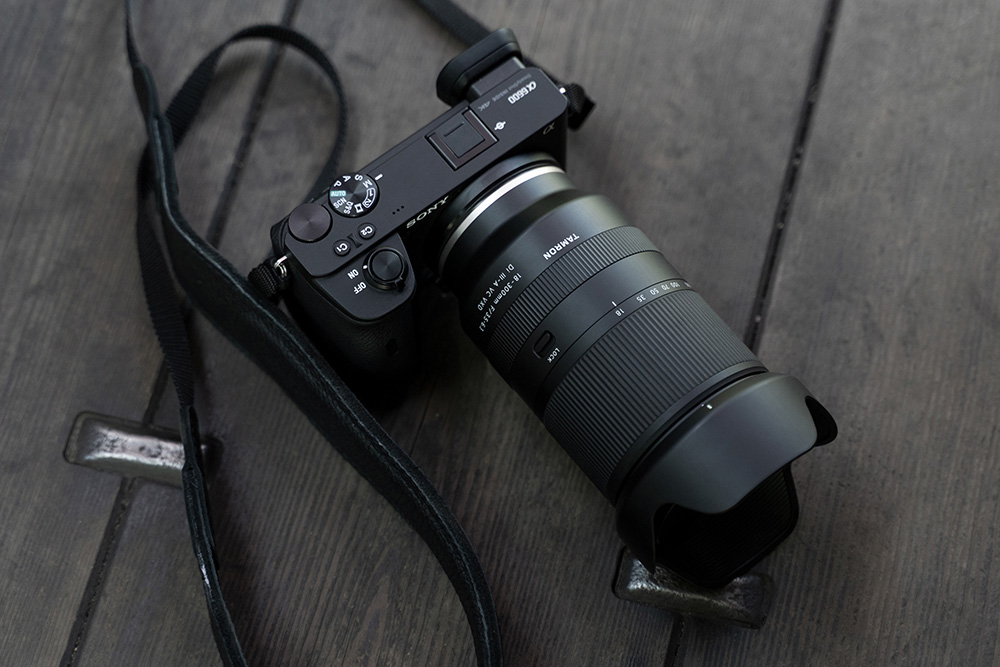
Tamron 18-300mm lens with Sony a6600
Additional all-in-one lenses
Although the big three brands of Canon, Nikon and Sony have all made themselves established with their stunning equipment, there are all-in-one options available for any shooter; no matter the camera brand.
The Fujifilm X-Mount features entirely APS-C lenses, which capitalise on the body’s crop factor for a further-reaching range. The XF 18-135mm F/3.5-5.6 R LM OIS WR has 5 stops of image stabilisation and up to 206mm of equivalent range which make it an ideal all-rounder, and well-suited for travel and walk-around shooting.
Rather uniquely, Fujifilm also offers the 18-120mm f/4 LM PZ WR lens, which is dedicated to professional filmmakers, videographers and broadcasters. It features smooth internal power zoom and stepless aperture control, adding next-level versatility to a filmmaker’s kit. The constant maximum aperture is also a huge bonus. This cine-type option and a video heavyweight like the Fujifilm X-H2 will combine to make a professional video powerhouse.
The newest addition to the L-Mount, the Panasonic Lumix S 28-200mm F/4-7.1 Macro OIS impresses with some of its specs. It’s the world’s lightest 7x zoom lens for full frame, offers half-size macro shooting and 6.5-stop Dual IS. To be more precise, the lens has a weight of approximately 413g, an outstanding figure. Any application of an all-in-one lens would be made brilliant with this choice.

Third-party choices
While some photographers swear by their camera’s brand for lenses, buying third-party opens up a whole new world of options when it comes to your equipment and your budget. Alternative brands have led the way for years now with optical brilliance, meaning the big camera brands hold less of a monopoly on the variety of lenses available to you (and on your wallet!).
Users of the Sony E-Mount are spoiled for choice when it comes to their selection of third-party choices. Tamron offers some versatile all-in-one lenses for the Sony E-Mount - their full-frame mirrorless offerings include the 28-200mm f/2.8-5.6, with an unmatched range of variable max apertures whilst still maintaining an outstanding weight of 575g.
For APS-C cameras, the Tamron 18-300mm F/3.5-6.3 will do the trick. The range provided cannot be understated, and a magnification ratio of 1:2, fantastic stabilisation and image quality combined with a high-end autofocus motor leave this lens with hardly any flaws.
Unfortunately, other third-party lens manufacturers like Sigma are yet to produce mirrorless all-in-one zoom lenses; however, it’s still worth checking out the expansive catalogue of third-party zoom lenses available today.

Tamron 28-200 all-in-one zoom
Micro Four-Thirds
Micro Four Thirds, as a format, is the essence of portability. Comfort and feel are at the forefront of every MFT camera’s design, and their lenses are no exception. It seems almost as if the format is tailor-made for all-in-one lenses – the crop factor extends their reach, giving users the most range possible, and its small size enhances handling.
Panasonic’s best entry into the all-in-one market is the Panasonic Lumix G Vario 14-140mm F/3.5-5.6. Its 28-280mm equivalent focal length covers a huge amount of shooting styles, and it also compensates for camera shake with Power O.I.S.
The range means there’s much more you can do with this lens – outdoor photographers will appreciate its weather-sealed design, being dust and splash proof, and withstanding both hot and freezing cold. It’s also nice and light at 265g, which is hugely beneficial to both photography and videography. If you’re out and about, and looking to shoot whatever catches your eye, this is perfect.
Olympus also has impressive all-in-one zooms available – the Olympus M.Zuiko 12-100mm f/4 has 6.5 stops of image stabilisation, an equivalent range of 24-200mm and an impressive weight of only 561g. For even more range, the more recent Olympus M.Zuiko 12-200mm f/3.5-6.3 has the most powerful zoom range in its class, with an equivalent 16.6x zoom and a comfortable variable aperture. This is ideal for any genre of photography where versatility (and travelling light) is of paramount importance – despite its outrageous range; it weighs only a single pound.
At Park Cameras, we’re passionate about helping you find the tool to take your photography to the next level. If an all-in-one zoom sounds like the perfect choice, we’re glad you’ve taken our guide on board and found the lens for you.
If not, our range of mirrorless camera lenses is constantly growing, and we’re certain you’ll find something great by exploring our range today!
Share this post:
By Thom Pyle on 11/03/2024

Trade in your old equipment
Fast and easy trade in service ensures your old gear is collected efficiently and you are paid quickly! It's very simple to trade in your unwanted photography gear. Just head over to our dedicated Sell or Part Exchange page, fill out the details, and we'll get back to you with an offer for your old gear. Take the cash, or put it towards the cost of your new gear. It's up to you! Find out more
sign up to the newsletter
Keep up to date on the latest photography news, events and offers. Sign up now
